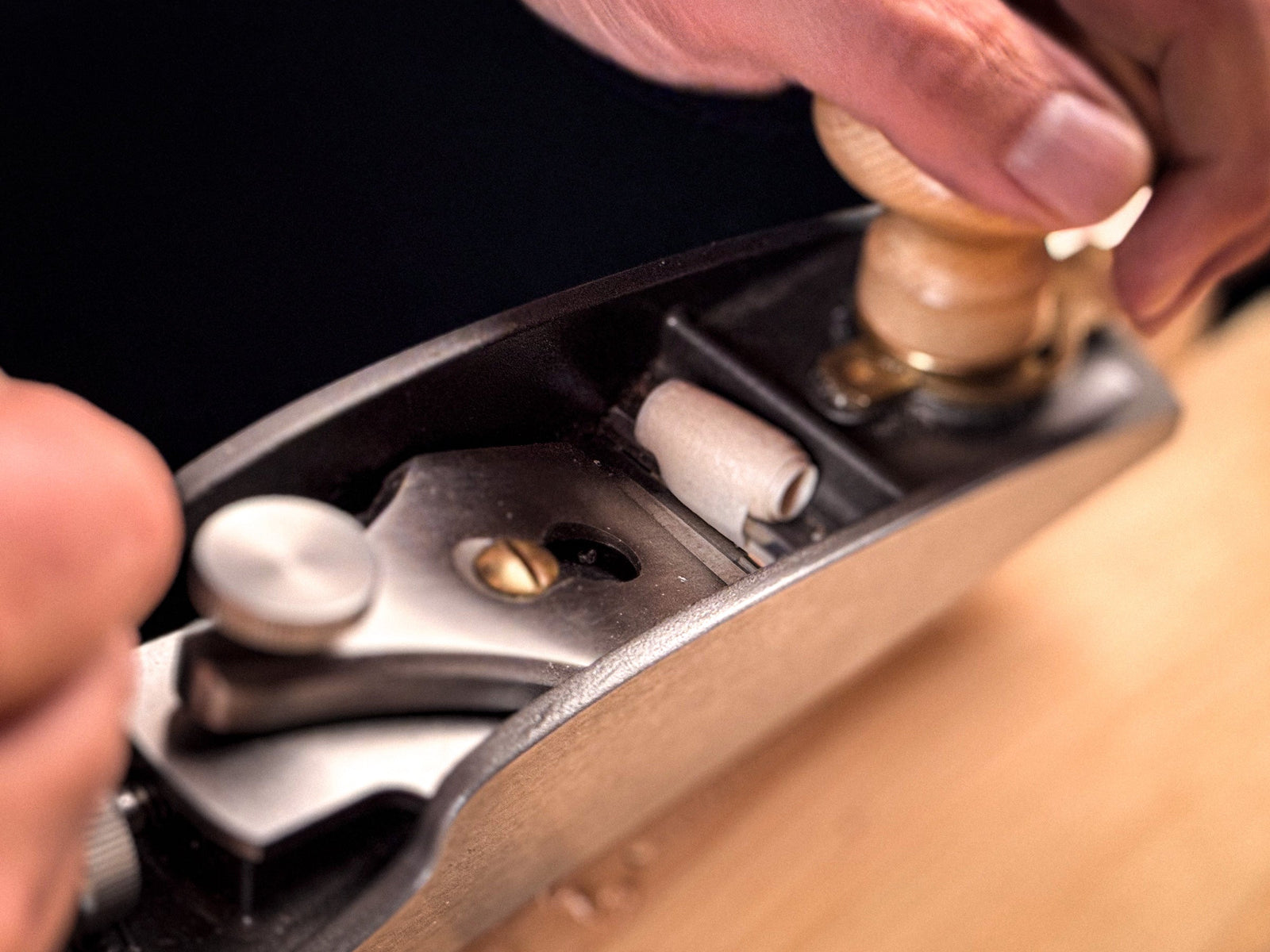When it comes to fine-tuning a low-angle hand plane, the mouth opening is a sometimes overlooked yet very useful adjustments you can make. Get it right, and your plane will leave whisper-thin shavings and glassy surfaces. Get it wrong, and you'll be battling tearout or clogging all day long.
What Is the Mouth, and Why Does It Matter?
The “mouth” of a plane is the gap between the front edge of the sole and the cutting edge of the iron. This opening allows shavings to escape—but it also plays a key role in supporting the wood fibres just ahead of the blade. The smaller the mouth, the more effectively it limits tearout, especially in reversing or interlocked grain.
All MTC low-angle planes feature a movable toe piece that allows you to fine-tune the mouth size quickly and easily depending on the task at hand.
When to Open or Close the Mouth
A tight mouth isn't always best—it's all about balance. Here's a rough guide:
Tight Mouth (small gap)
Tightening the mouth helps prevent fibres from lifting and tearing ahead of the blade. This is ideal for fine finishing cuts, especially on difficult grain.

Wide Mouth (larger gap)
When you’re taking a heavier cut, a tight mouth will cause the shaving to get clogged. So when roughing out or working with softer, straight-grained timber, open up the mouth.

How to Adjust the Mouth on a Low-Angle Plane
First set the blade projection for the task at hand.
Loosen the Toe Locking Mechanism
On MTC’s low-angle planes, this is achieved by turning the front knob anti-clockwise.
Slide the Toe Forward or Backward
The brass adjuster allows additional control – move the tab to the left or right to slide to open or close the mouth. For heavy cuts the setting is less critical -just open it up so there is plenty of clearance from the blade. For fine cuts and maximum tear-out reduction, set the mouth so that it is almost closed and the shavings can just pass through the gap.

Tighten the Locking Mechanism
Once you’ve got the setting where you want it, lock the toe in place by turning the front knob clockwise. Check that it’s snug but not overly tight—just enough to prevent movement during use.

Test on some Scrap
Always try a few passes on offcut stock. If the mouth is clogging, increase the mouth gap. If you’re getting tear-out, you might need to close up the gap a bit more.
Pairing Mouth Adjustment with Other Tuning
The mouth is only one part of the equation. To get the best possible performance from your low-angle plane, combine a fine mouth setting with:
- A sharp blade is always the most important part of reducing tear-out. If the grain is reversing, consider swapping to a blade with a steeper bevel angle.
- Light cuts—reducing the depth of cut is helpful in reducing tear-out in combination with the above suggestions.
All of these elements work together to support the fibres as they’re cut, rather than prying them up and tearing them out.
Final Thoughts
Setting the mouth on your low-angle plane is a small adjustment with a big payoff. It gives you control over the cut, improves surface quality, and helps reduce frustration when working with difficult grain.
So next time you’re planning to take fine shavings, remember to “mind the gap”.

